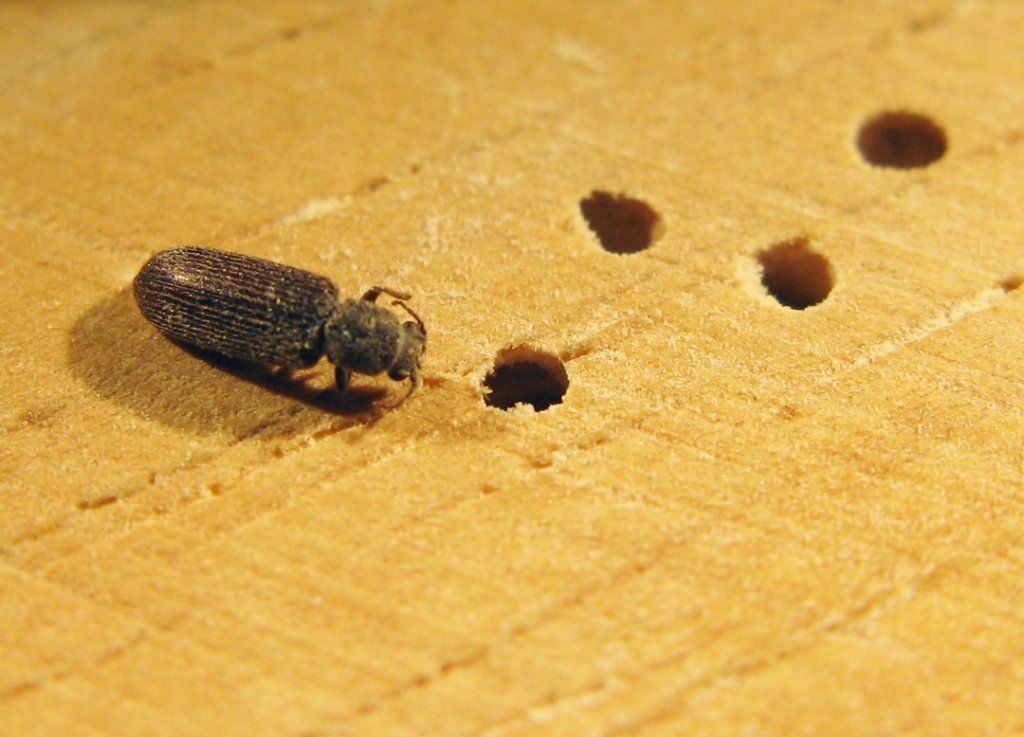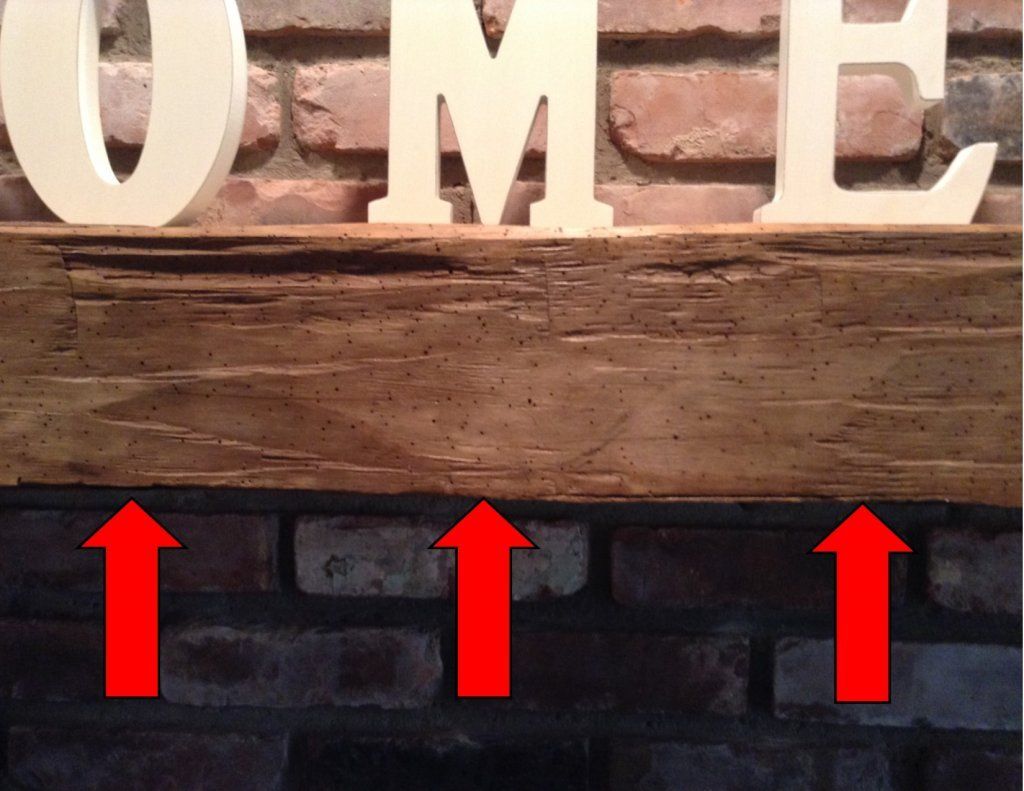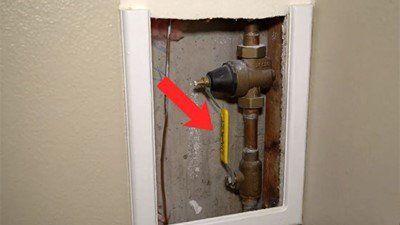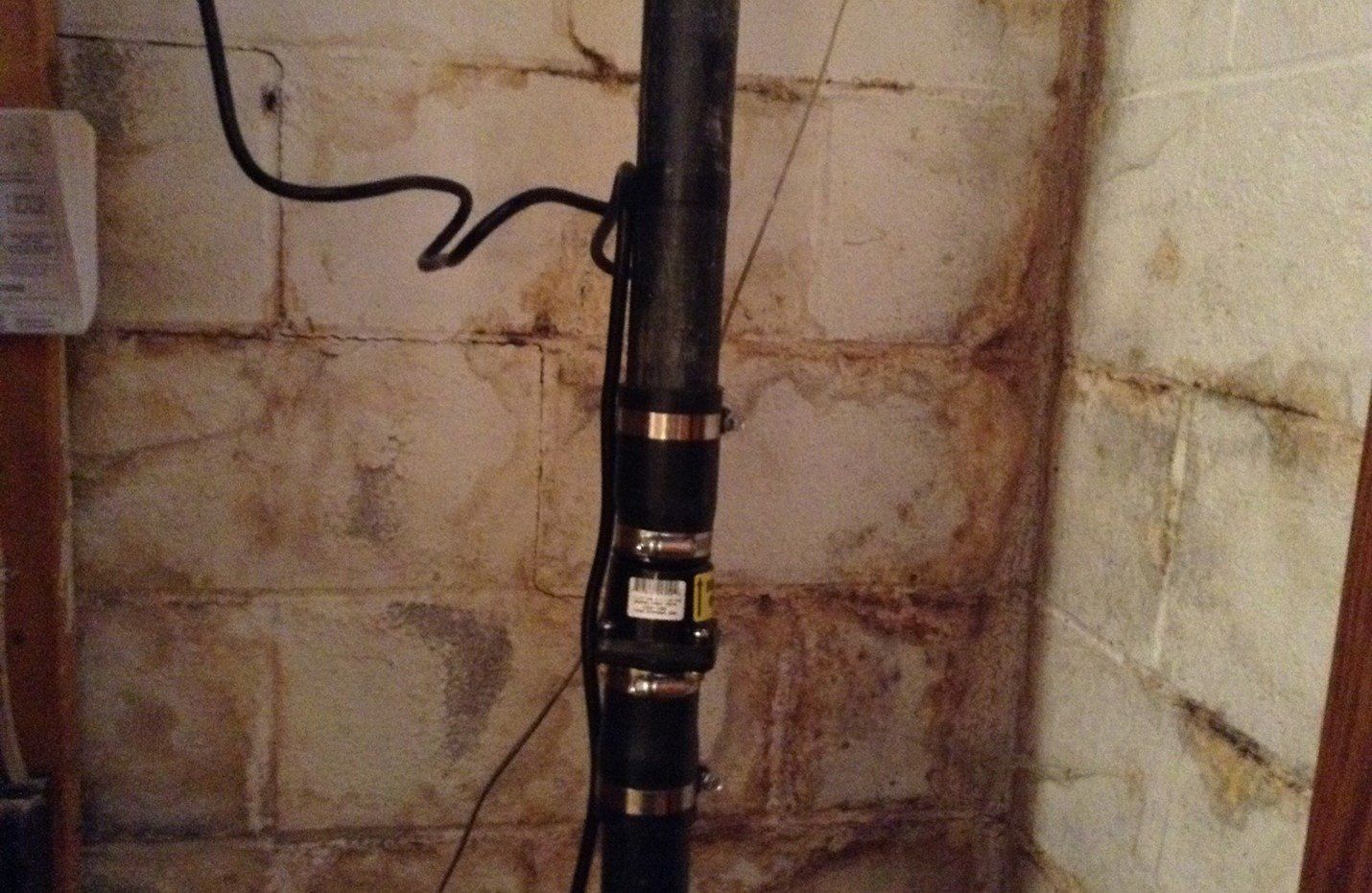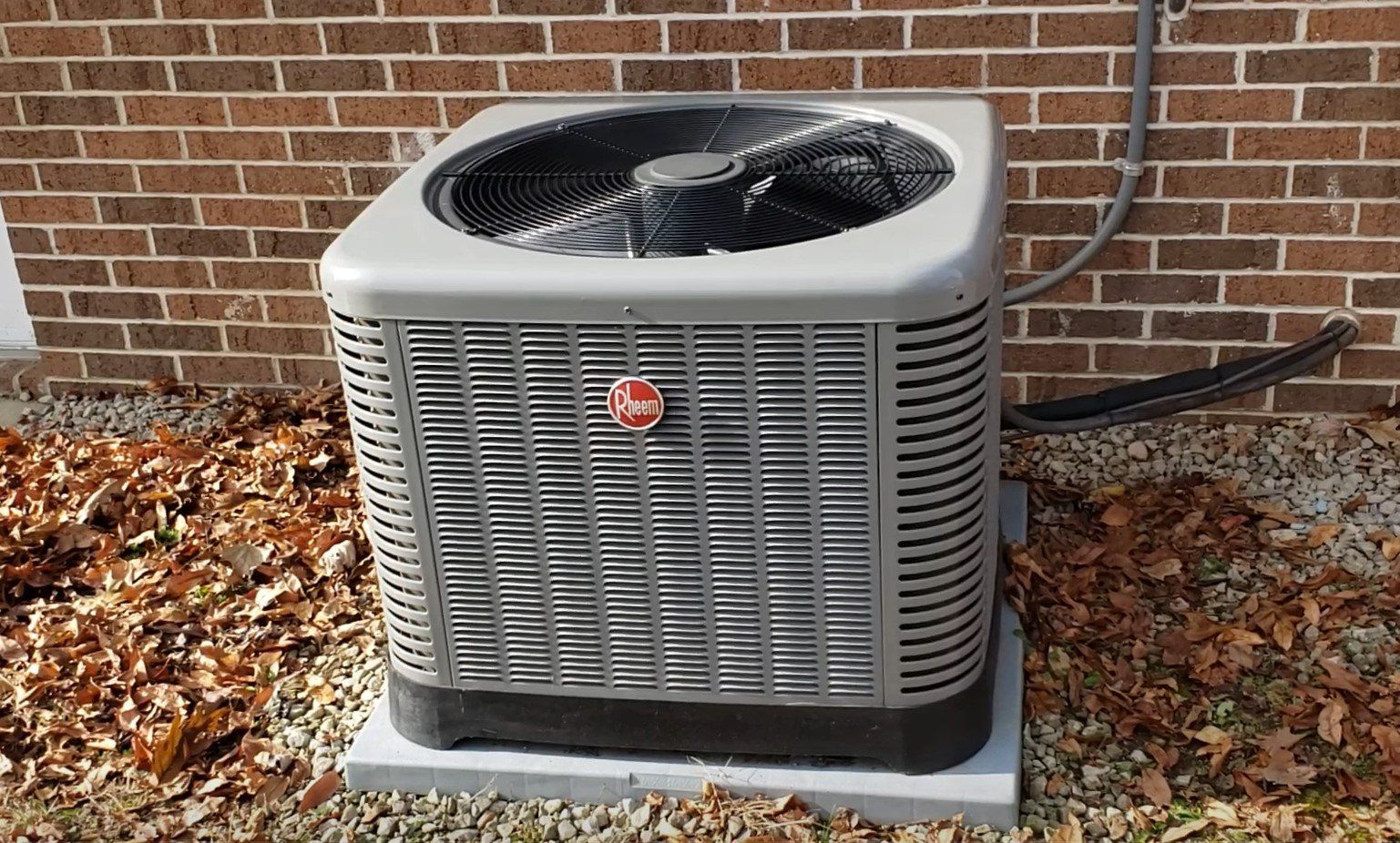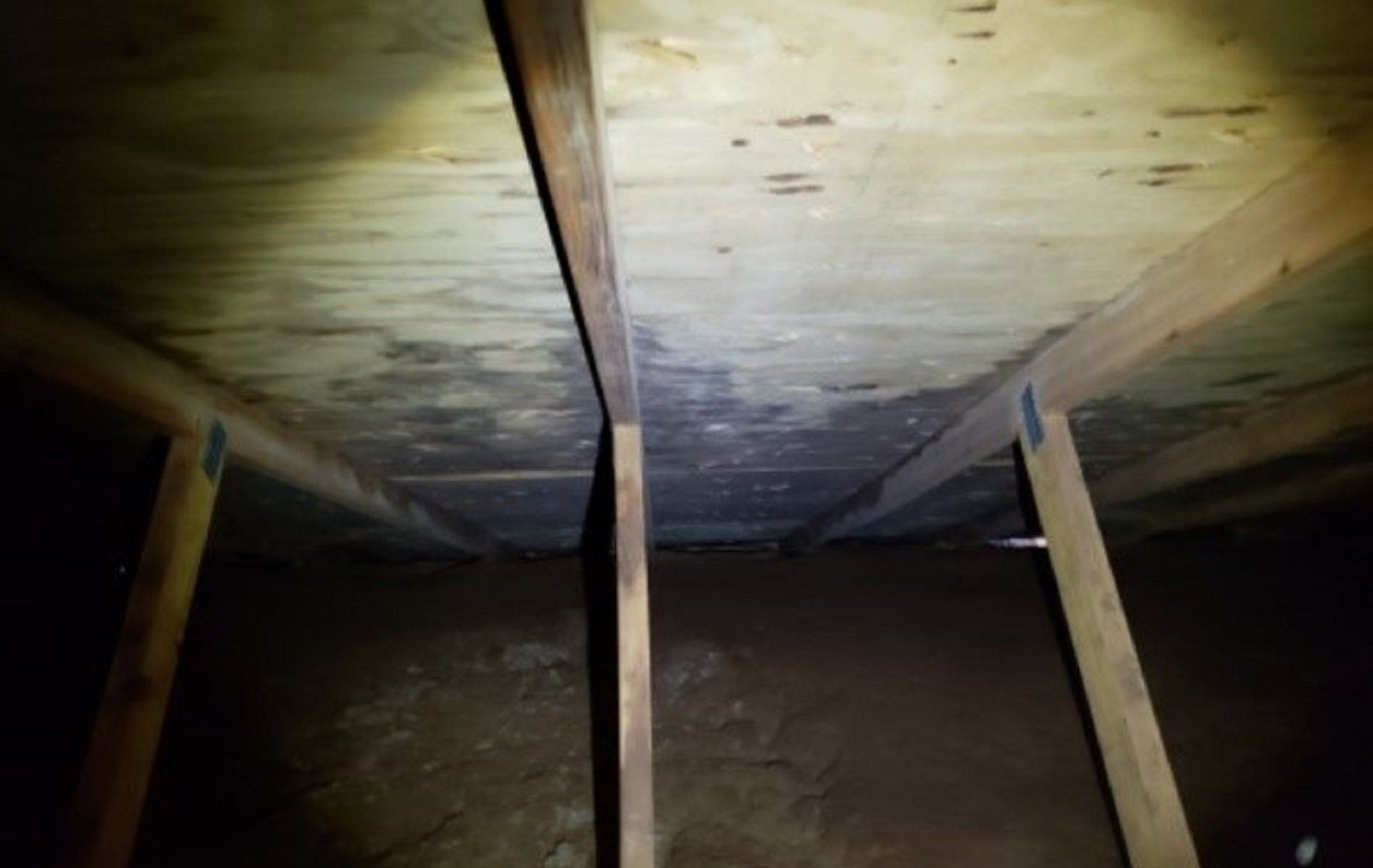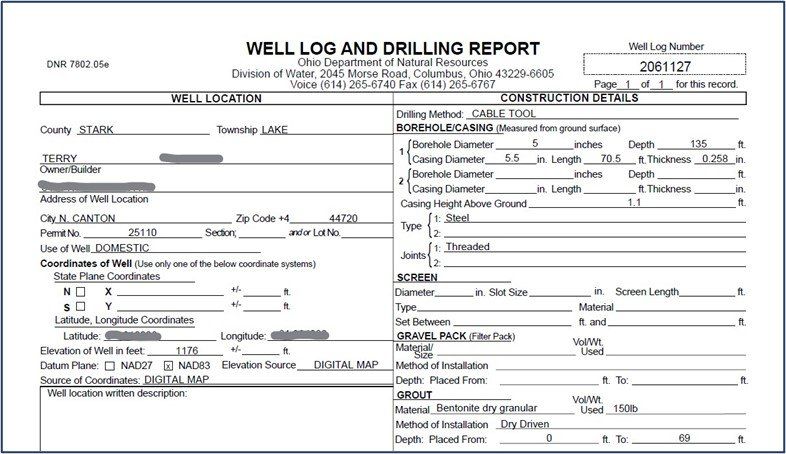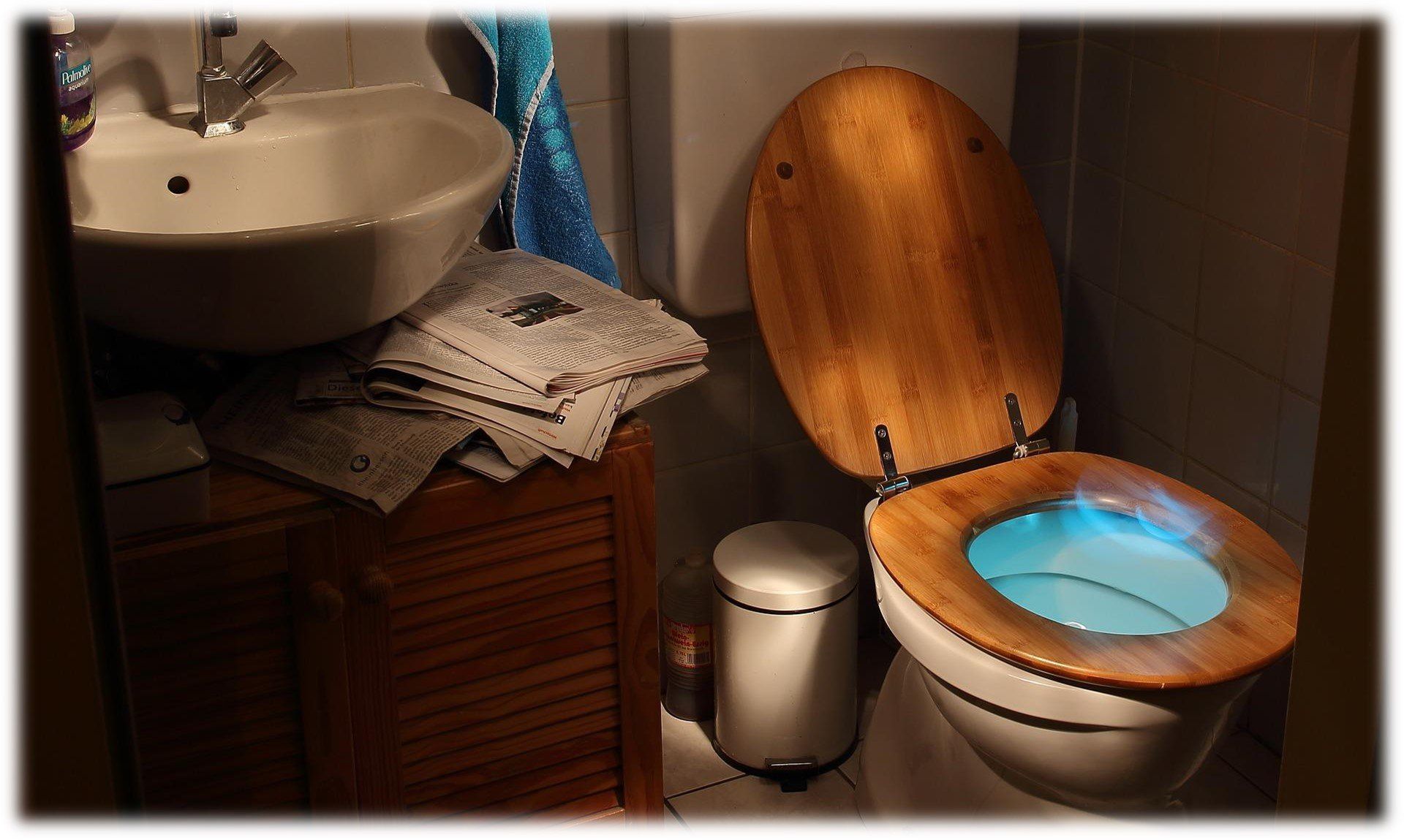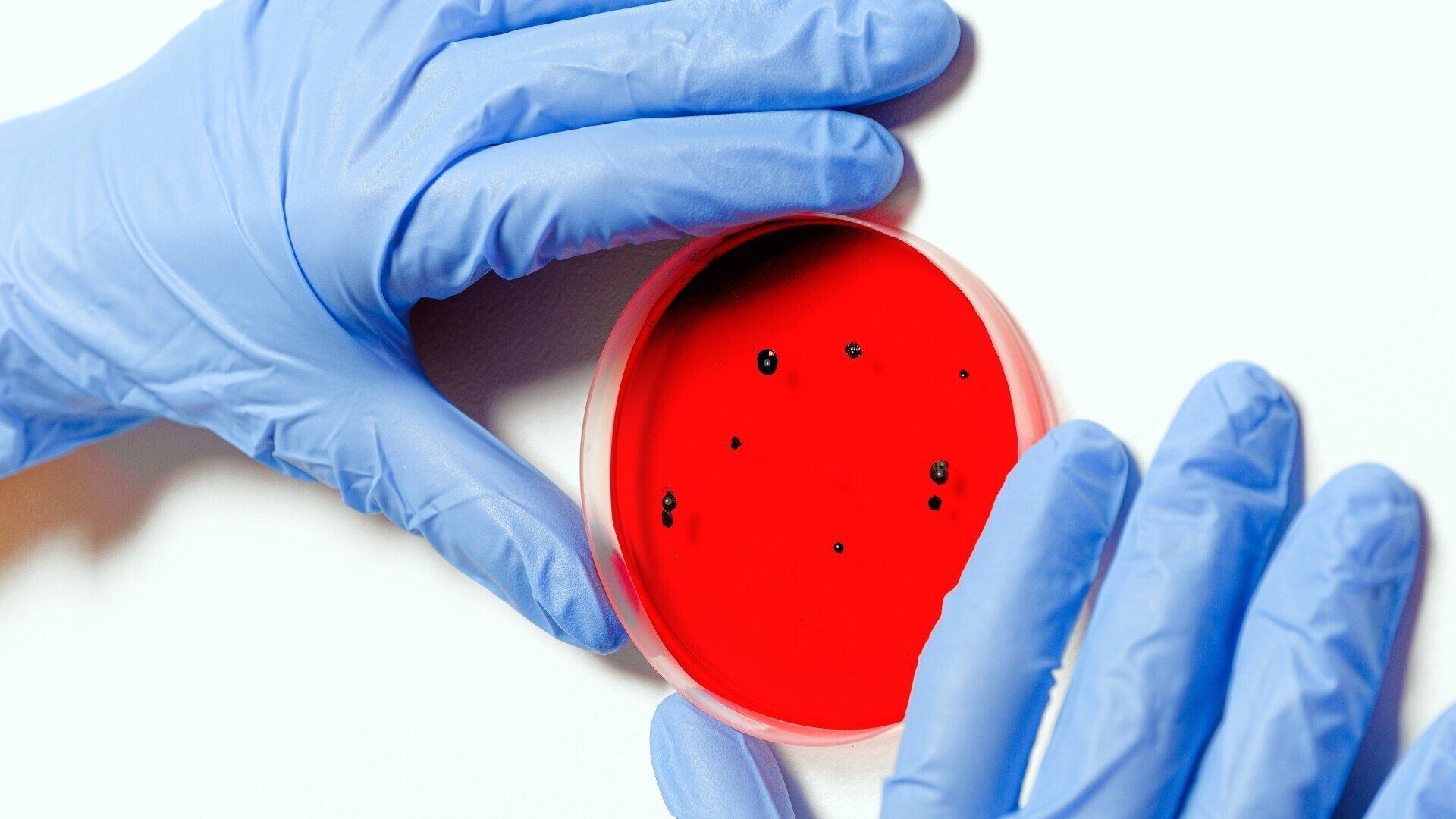Wood Destroying Insects
- By Admin
- •
- 14 Jun, 2016
- •
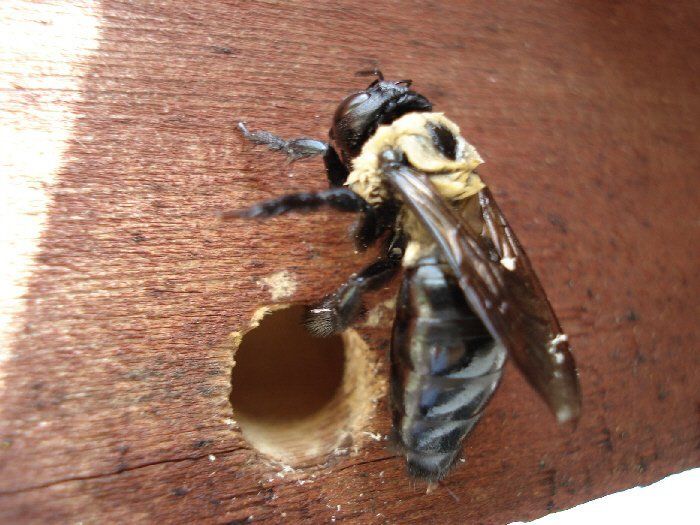
Carpenter bees do not eat wood but do bore into the wood to lay their eggs. They prefer pine, fir, Cyprus, oak and redwood. Wood is especially vernable if the wood is unpainted or unfinished.
Construction of these holes and tunnels are a labor-intensive process that take much time and energy. As a result, females often use existing tunnels instead of making new ones. Old tunnels can increase several feet over several years. The hole is slightly less than 1/2-inch wide, which is about the size of her body. The bore hole goes into the wood perpendicular to the wood’s grain for about 1-2 inches and then takes a right angle turn continuing as a tunnel that runs another 4-8 inches. The female carpenter bee then partitions off brood cells into linear rows. When finished, she places a food ball inside a brood cell, lays an egg, and blocks the chamber off with chewed wood. After laying eggs, the female dies. The egg hatches and become larvae that feed on the food ball until they pupate. Click on the pictures below to learn more.

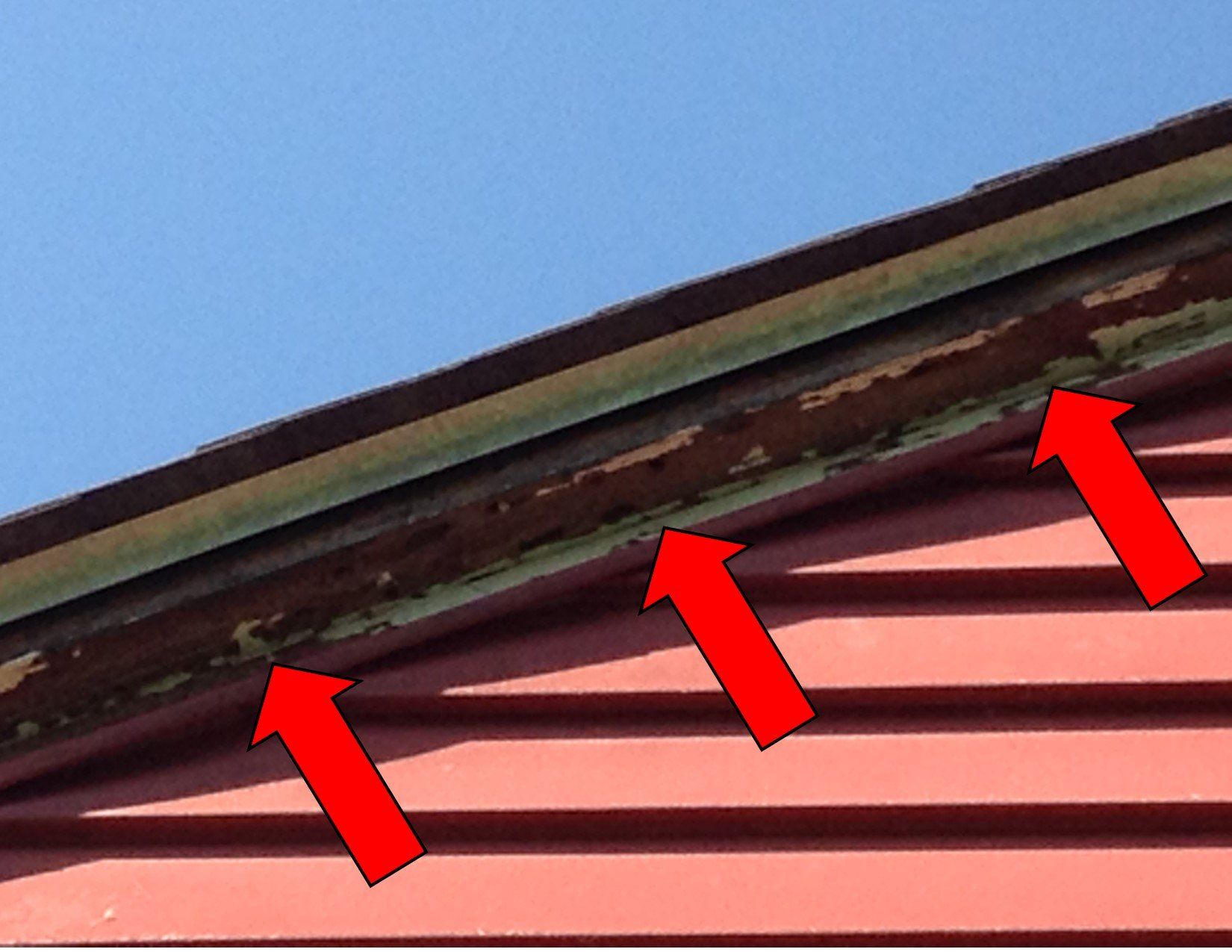

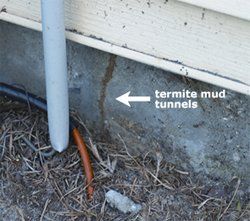
Termites are often called the “silent destroyer” because they may be secretly hiding and surviving in your home or yard without any immediate signs of damage. All termites consume cellulose-based plant materials. All homes, regardless of how they were constructed, can provide this cellulose food for termite infestation. A termite’s mouth is capable of tearing pieces of woody material. This ability is what causes concern in your home. While they are very small insects, they can cause serious damage to your home. You will rarely see termites because they are small and stay within the "tunnels" or "tubes" they create. They need moisture to survive and these tunnels have high mosture.
House foundations, furniture, shelves and even books are all possible feeding sites for termites.
Click on the pictures below to learn more.


